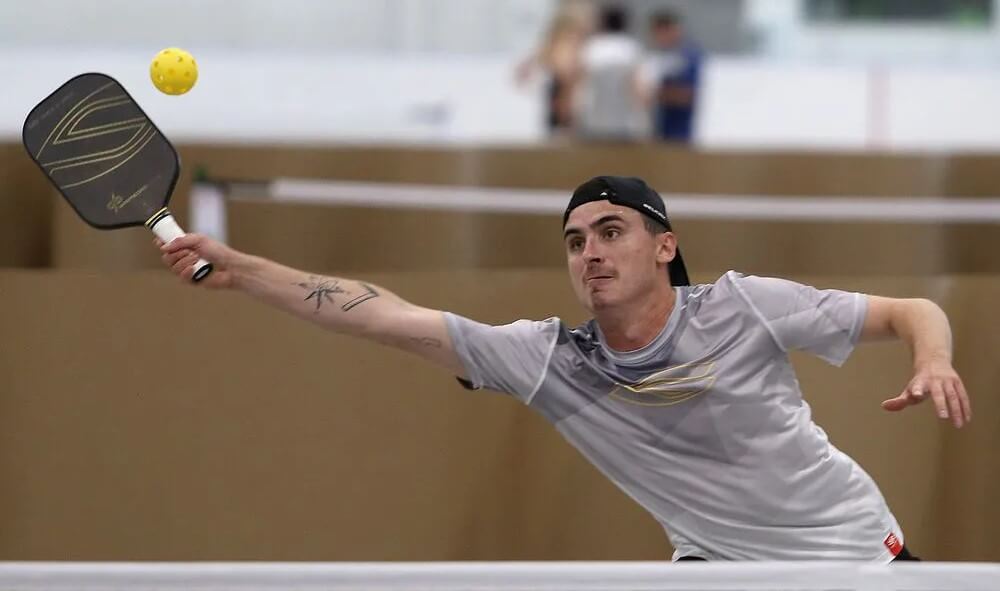by Jenny Foster
Similar to other sports, pickleball may be played by single players. Although a number of pros can give advice about how pickleball players should be played by teams, others are also eager to participate in a match just by themselves.
An important information to learn about pickleball singles is the scoring system. Similar to when playing doubles, the point will depend on the serve. For example, after a rally, even if the ball goes outside in the opponent’s court, a pickleball player does not earn the point if they did not serve the ball.
Meanwhile, a pickleball player’s score will determine their service court. To review, the right side of the court is considered the even side and the left, the odd side. A player who has an even number of points will serve on the right side of the court and on the left if they have an odd-numbered score.
Different from the doubles, the serve in singles pickleball requires no first nor second serve.
In singles pickleball, a sideout is considered when the server loses a rally. In this case, points reach up to 11, with a margin of 2 points considered as winner.
STRATEGIES FOR PLAYING SINGLES PICKLEBALL
- Return strategy
In singles pickleball, just like in doubles, one must focus on returning the ball and subsequently going to the net. Some pickleball players may wonder what is the essence of going up the net. The answer is simple. It gives the player the opportunity to block the ball at a shorter time compared when they are in the baseline. As a result, the opponent’s reaction time is reduced. In addition, a position in the kitchen line allows a pickleball player to hit the ball at different angles, which is basically a good strategy for hitting the ball at a direction away from the opponent.
However, there is certain challenges when making a return in singles pickleball player. Given the lack of partner, a singles pickleball player must cover the entire court by themselves. Thus, to make up for this advantage, every pickleball player who participates in a singles match should practice their return.
In singles pickleball, when returning a serve, a player should ensure that their shot will cause certain difficulty for their opponent. There are a couple of ways to do this. The first one is to target the opponent’s weaknesses. A number of pickleball players would claim having a weak backhand. To defeat such opponents, one must hit their return near the sideline but at a fast speed. Without proper speed, the opponent may find a chance to use their strong shots when hitting the ball.
- Force the server to run
Although most pros would advise making the server run toward their weaker side, some may opt the direction of their strength, especially when a server is very protective of their weaknesses.
SERVE IN SINGLES PICKLEBALL
In singles pickleball, a player must take advantage of the serve and use it to create a challenge for their opponent. Knowing that the other player will aim for a hard return, the server should also try to prevent them from making such a move. To achieve such goal, every serve must be done with careful thought. For instance, a pickleball player can serve while aiming to expose their opponent’s weaknesses or serve the ball in a way that makes it difficult for the opponent to hit a good return.
Servers in singles pickleball may also want to try hitting the ball hard, making the opponent move with their serve or serving deep. Especially with a deep serve, the opponent faces the challenge of proper timing and is forced to cover more distance as they go up the net.

3RD SHOT IN SINGLES PICKLEBALL
There are two factors that can affect the 3rd shot when playing singles pickleball: readiness of the player and that of the opponent. In singles pickleball, a 3rd shot drive is highly recommended given that the opponent must protect the entire court.
An important thing to remember in the 3rd shot drive is one’s preparedness, that is, they must properly set themselves up to hit a good 3rd shot drive. Any errors in the 3rd shot drive can give the opponent an opportunity to hit an unreturnable shot.
When experiencing trouble in their 3rd shot, a player can opt for a drop instead to re-establish themselves in the game. However, this would result in an exchange of dinks that can tire both players.
In certain cases, when luck is one their side, singles pickleball players can use the lob against opponents with poor movements.
4TH SHOT IN SINGLES PICKLEBALL
In singles pickleball, players should look for a chance to make a volley to the open court during the 4th shot. The ball can be directed midcourt or drop near the net, as long as it is directed away from the opponent. This way, the opponent will be forced to run after the ball and there’s a great chance of them missing it.
When countering a 3rd shot drop, one must still focus on forcing the opponent to move around the court. One possible shot to achieve such is goal is by dinking. The dinking may last for a moment, at least until the opponent makes an error or miss the ball.
